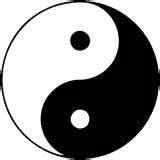© Copyright 2011 Judy Jennings
The most widely accepted theory about the origin of the Tarot is that the cards were developed as a pictorial book designed to help preserve occult knowledge throughout the rise and fall of various cultures. The Rider deck incorporates a number of different world philosophies. For example, the seven Chakras of the Hindus and Buddhists are represented in The Star, astrology and numerology are prominent influences, and there are repeated references in the major arcana to early Sun-God worship. There are two other concepts featured throughout the deck that are intrinsic to a dynamic understanding of the cards, and these are the ideas of Duality and Trinity.
The most widely accepted theory about the origin of the Tarot is that the cards were developed as a pictorial book designed to help preserve occult knowledge throughout the rise and fall of various cultures. The Rider deck incorporates a number of different world philosophies. For example, the seven Chakras of the Hindus and Buddhists are represented in The Star, astrology and numerology are prominent influences, and there are repeated references in the major arcana to early Sun-God worship. There are two other concepts featured throughout the deck that are intrinsic to a dynamic understanding of the cards, and these are the ideas of Duality and Trinity.
Most popularly known these days as Ying-Yang and The Holy Trinity, both are spiritual ideals that have been embraced by human societies for ages. The concept of duality is embedded in our American culture with phrases like “Opposites attract” and is a fairly easy idea to grasp.
The three-fold concept is a psychological homage to the three phases of the Sun. Dawn, noon and dusk are aspects that play out constantly in our lives, both on a daily basis and over the span of years. Christians espouse the Father-Son-Holy Ghost trinity, Pagans in the Dianic tradition honor the Mother-Daughter-Crone, and Hindus find their trinity in Brahma, Vishnu and Shiva. According to astrologer Alan Oken the Persians, Babylonians and Egyptians also had their trinities, all of them ultimately relating back to the Sun as the primary Universal Life-force.
The first three cards of the major arcana eloquently express both of these principles. The Magician and The High Priestess are of different natures, the former representing calculating intelligence and the conscious mind, while the latter is rooted in the subconscious. You might even say they represent the two hemispheres of the human brain. The message of this pairing is a prominent theme throughout the major arcana: A meaningful life is based on a foundation of harmonious exchange between the conscious and subconscious minds.
The addition of the third arcana transforms Duality into Trinity. The auspicious forces at work in The Empress are full of promise, but can only thrive in a personality that has incorporated the qualities of the first two cards. Often interpreted as a very feminine card, The Empress has other meanings as well. This card represents the perfect balance of Ying and Yang, the perfect union of male and female and the One Universal Unisexual Parent. Thus is born creative imagination and the generation of ideas.
If you’d like to take a closer look at the principle of Duality in the Tarot, lay out the cards of the major arcana side by side and consider how each card expresses qualities that are opposite from the card before. In another discussion we’ll take a look at the power of four that is also represented in the cards.

No comments:
Post a Comment